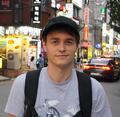Cited By
View all- Cheng RWu NVarvello MChai EChen SHan BVallina-Rodríguez NSuarez-Tángil GLevin DPelsser C(2024)A First Look at Immersive Telepresence on Apple Vision ProProceedings of the 2024 ACM on Internet Measurement Conference10.1145/3646547.3689006(555-562)Online publication date: 4-Nov-2024
- Li JWu SLeshed G(2024)Re-envisioning Remote Meetings: Co-designing Inclusive and Empowering Videoconferencing with People Who StutterProceedings of the 2024 ACM Designing Interactive Systems Conference10.1145/3643834.3661533(1926-1941)Online publication date: 1-Jul-2024
- Wu SLi JLeshed G(2024)Finding My Voice over Zoom: An Autoethnography of Videoconferencing Experience for a Person Who StuttersProceedings of the 2024 CHI Conference on Human Factors in Computing Systems10.1145/3613904.3642746(1-16)Online publication date: 11-May-2024
- Show More Cited By


